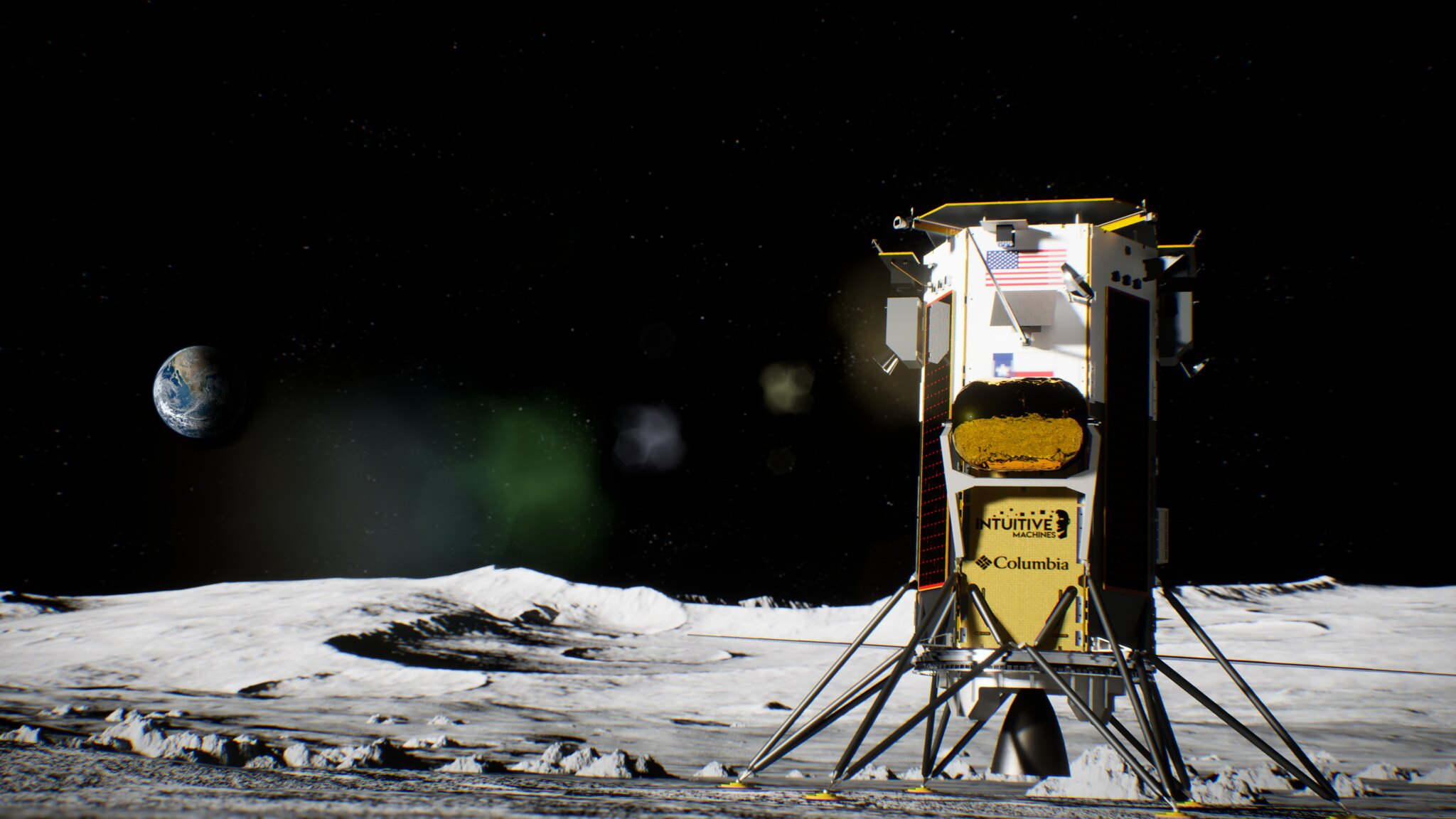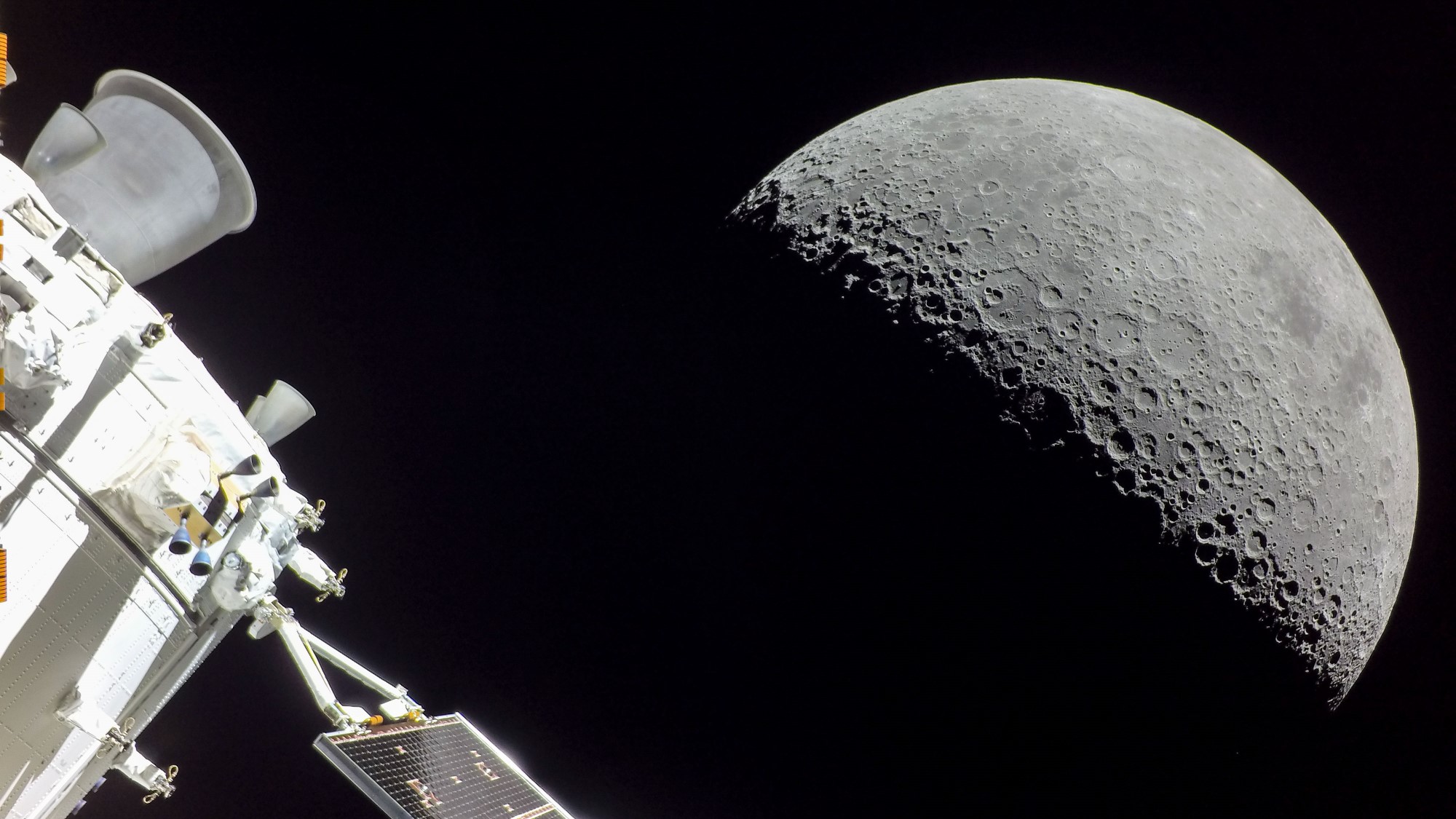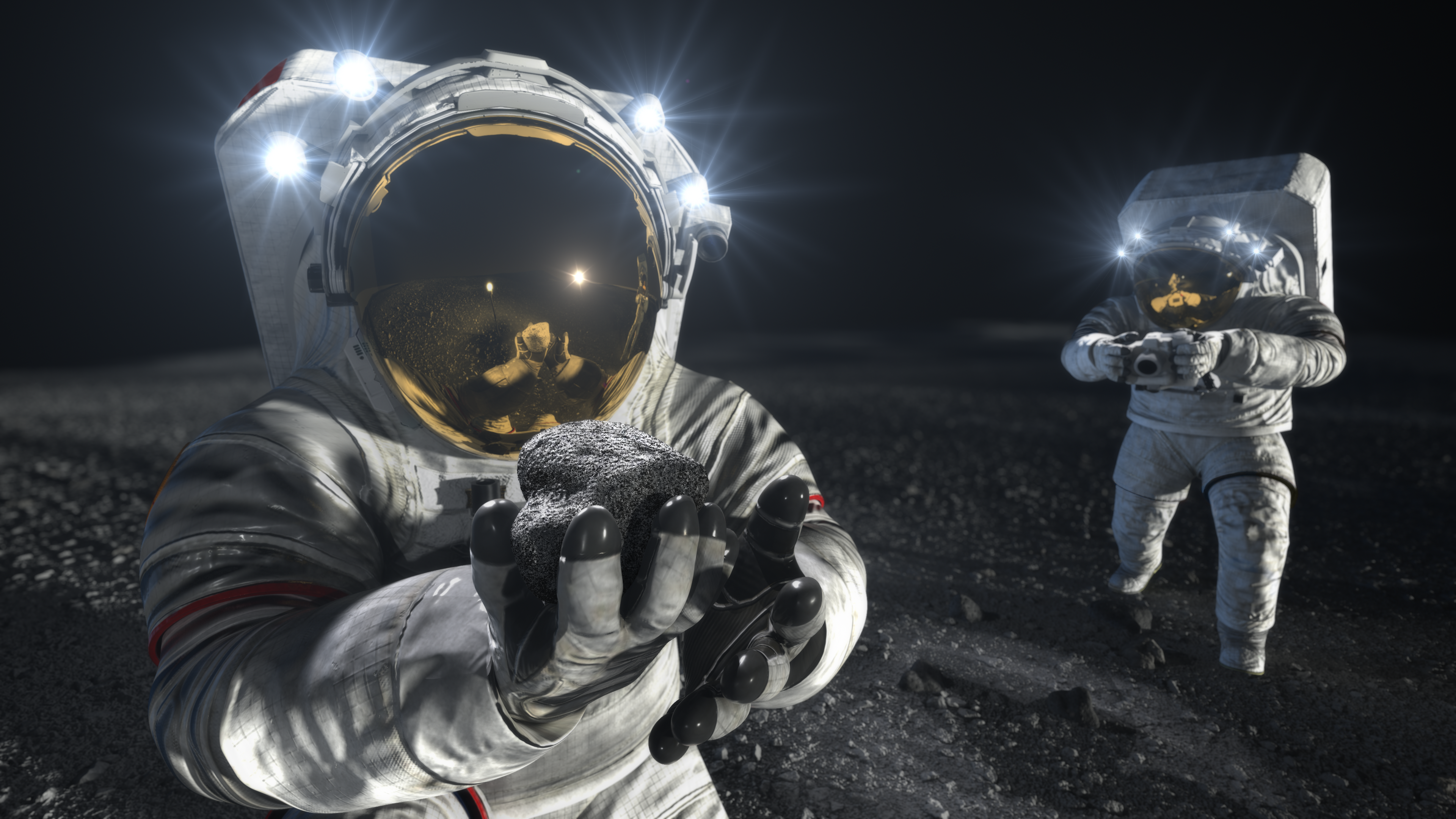Intuitive Machines now targeting moon's south pole for delayed lunar landing mission
The shift in Intuitive Machines' landing date adds more uncertainty as to when the first privately funded U.S. moon lander will touch down on the surface.

An ambitious moon mission set to touch down at the south pole will delay its landing this year by a few months.
Intuitive Machines will push back its IM-1 south pole moon landing for NASA to June instead of in the spring, the company announced Monday (Feb. 6).
The news confirms a NASA request from September 2022 to redirect the mission to the south pole instead of one of the moon's equatorial regions. That was reported in Ars Technica last fall when Intuitive Machines said it planned to become a public company and list on the NASDAQ exchange.
Presumably the launch of IM-1 on a SpaceX Falcon 9 rocket last set for March will also be delayed, but the company did not yet disclose the timing.
Related: NASA's full plate of moon missions before astronauts can go
"This change is expected to positively impact Intuitive Machines' backlog," company officials said in a brief release announcing the timing change on its mission, but provided no other details. ("Backlog" refers to booked missions from customers.)
The south pole mission aims to serve as a scientific scout for astronauts on Artemis program missions touching down there as soon as 2025. Artemis 1 already flew an uncrewed mission around the moon in 2022, the crew of the moon-circling Artemis 2 should be announced this spring and Artemis 3 will aim to land on the surface in two years.
Breaking space news, the latest updates on rocket launches, skywatching events and more!
More broadly, the shift in Intuitive Machines' landing date adds more uncertainty as to when the first privately funded U.S. moon lander will touch down on the surface, as at least one other company's mission should also lift off early in 2023.
The Pittsburgh-based company Astrobotic is also slated to touch down on the moon this year, bearing NASA gear on its Peregrine lunar lander, to a strange lunar patch known as the Gruithuisen Domes, in the Ocean of Storms.
Astrobotic's first mission could lift off as soon as the first quarter of 2023, but details on such missions are always subject to change. Indeed, NASA announced Astrobotic would change its landing site to Gruithuisen just last week.
Astrobotic and Intuitive Machines are both funded under NASA's Commercial Lunar Payload Services program, which includes a collection of rovers, landers and other equipment bound for the moon. The scope is ambitious as to date, all successful moon landings have been performed by governments.
However, yet another private mission led by a Japanese company is already en route to the moon and may touch down before the American efforts. The Hakuto-R lander, built by Tokyo-based company ispace, is scheduled to touch down in April if all goes well. The spacecraft finished a deep-space maneuver last week and is slated to deliver a small rover, Rashid, provided by the United Arab Emirates' space agency.
The south pole of the moon appears to be rich in water ice, which is why there is such an interest in landing equipment and eventually humans in that zone. (That said, other CLPS missions like Astrobotic's will land in different lunar regions to increase science return on understanding the moon's history and formation.)
Intuitive Machines did not discuss its exact south pole target location in the press release, but SpaceNews (speaking with a representative) suggests it is Malapert A, a crater near the south pole. Intuitive Machines' IM-1 mission aims to land there with five NASA science experiments aboard its Nova-C lander:
- A Laser Retro-Reflector Array (LRA) to measure how fast the moon is moving away from Earth.
- The Navigation Doppler Lidar for Precise Velocity and Range Sensing (NDL) to measure Nova-C's descent and aim for a soft landing.
- The Lunar Node 1 (LN-1), to navigate using a radio beacon.
- Stereo Cameras for Lunar Plume-Surface Studies (SCALPSS) to study the Nova-C's rocket exhaust plume effects on lunar regolith, through photos and video.
- Radio-wave Observation at the Lunar Surface of the photoElectron Sheath (ROLSESto examine space weather at the lunar surface and how the radiation will affect astronauts and equipment.
A future Intuitive Machines' mission, known as IM-2, plans to land NASA's Polar Resources Ice-Mining Experiment-1 (PRIME-1) on a ridge of Shackleton Crater at the south pole within range of solar power, and Earth communications.
Additionally, a lunar "hopper" called Micro Nova (μNova) on board IM-2 could bounce as far as 15. 5 miles (25 km) across the surface, perhaps even into permanently shadowed craters rich in water ice.
IM-2 will also launch with SpaceX aboard a Falcon 9 rocket. Previously announced targets suggest a liftoff somewhat later in 2023, although NASA and Intuitive Machines have not announced updates on that in recent months.
Elizabeth Howell is the co-author of "Why Am I Taller?" (ECW Press, 2022; with Canadian astronaut Dave Williams), a book about space medicine. Follow her on Twitter @howellspace. Follow us on Twitter @Spacedotcom or Facebook.

Elizabeth Howell (she/her), Ph.D., was a staff writer in the spaceflight channel between 2022 and 2024 specializing in Canadian space news. She was contributing writer for Space.com for 10 years from 2012 to 2024. Elizabeth's reporting includes multiple exclusives with the White House, leading world coverage about a lost-and-found space tomato on the International Space Station, witnessing five human spaceflight launches on two continents, flying parabolic, working inside a spacesuit, and participating in a simulated Mars mission. Her latest book, "Why Am I Taller?" (ECW Press, 2022) is co-written with astronaut Dave Williams.


